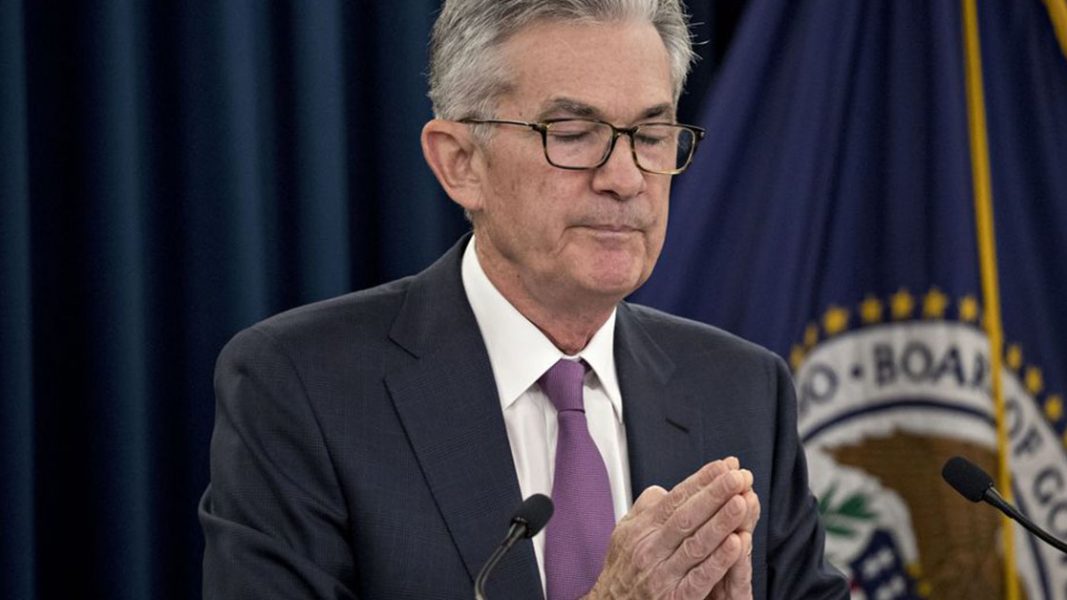“Don’t fight the Fed” as you are being paid to take risks. Your investment thesis on asset classes at this present moment will be to follow the Fed (or central bank) dollar. Moral hazard is too costly it seems, and the latest unprecedented stimulus measures announced by the U.S. Fed in corporate credit markets highlights that the “whatever it takes” approach really has no boundaries.
Consequently, markets have bounced back and recovered more than what many investors would say is warranted given the uncertainty. Whether the recent bounce is a bear-market rally or V-shape recovery we will only know in hindsight. But the rally is simply following the policy, not the fundamentals (earnings estimates). It remains to be seen whether the upcoming economic data releases and subsequent company earnings update will see the fundamentals catch up to the valuations. We retain a balanced view on markets at this stage.
This may sound strange, but we can justify the recent market rally in risk assets. The correction was sharp, and the initial recovery off the lows was just as sharp. Several conditions have been met to justify this bounce including:
(1) Unprecedented and very swift fiscal and monetary policy response, it has been faster and harder versus previous downturns. The U.S. Fed (and other global central banks) this time around benefited from having the Fed’s playbook from the GFC, which allowed the swift response. The market was always going to respond positively to this news, as was the case during the GFC when stimulus measures were announced.

(2) New cases globally have peaked (for the first wave) and some of the worst hit regions (Italy and Spain) are seeing conditions improve from absolute dire situations. This is a unique exogenous shock and not one caused by your traditional financial or economic characters. At this stage of the downturn, the peaking of new cases is perhaps more important than consensus earnings estimates fully incorporating the downside (which is still difficult to fully encompass at this stage due to the uncertainty). In our view, this explains the disconnect between the current market rally and underlying earnings fundamentals.
Watch out for the second wave. We believe this is an important point which investors should not discount. COVID-19 is highly contagious and as economies reopen, there is the fear it may start another wave of outbreaks which lead to further cautionary isolation and shutdown policies. We only have to look at the 1919 influenza pandemic as an example, which saw multiple waves after authorities relaxed social distancing measures post the first wave. Further, Singapore is currently experiencing a second wave of COVID-19 after being labelled among the few countries which responded very swiftly to the initial outbreak.
Whether we test new lows in this downturn will be determined by how earnings estimates shape up over the coming months. This will be, in large part, driven by how economies try to reboot. The pace and execution of this will be a positive catalyst for markets (some of this is already behind the current market rally, in our view) and future earnings estimates (e.g. analysts’ estimates may not need to be pulled back as much, especially if there is no second wave and rebooting is relatively orderly).
On the earnings front, we continue to believe there is more downside risk to consensus earnings estimates. Invariably, most companies have their earnings linked to economic growth and there tends to be a multiplier effect (margins, operating leverage etc.). This is before we consider the second order impacts on companies. That is, a significant decline in economic activity can translate into company earnings declining by 5 – 10x the magnitude depending on cost structures and business models.
U.S. valuations have made a V-shape recovery. The true extent of the impact from COVID-19 is still yet to be seen in the economic data and earnings estimates, in our view. Yet the markets have bounced from their recent lows. The S&P 500 Index (U.S.) fell -33.9% from its high in late Feb-20 to its low in late Mar-20. From its recent low, the index has recovered or bounced back more than +24%. Further, prior to the sell-off in Feb-20 the S&P 500 Index was trading on a 12-mth forward blended PE-multiple of 19.0x and as of close 17 Apr-20 the Index is trading on a forward PE-multiple of almost 20x (or to be exact 19.7x). That is, the valuation as measured by PE was above its recent peak.
 Analysts have started to lower their estimates. Back in early March 2020 we wrote to clients highlighting that analysts’ earnings estimates for S&P/ASX 200 were vulnerable given the magnitude of economic shock we are likely to experience from the Coronavirus. Since that time, consensus estimates have started to come down. At the time of writing, consensus now expects CY20 earnings to decline by -12.4% and dividend per share to decline by -21.5%. From 28 Feb-20, consensus have cut their earnings estimates by -15.2%.
Analysts have started to lower their estimates. Back in early March 2020 we wrote to clients highlighting that analysts’ earnings estimates for S&P/ASX 200 were vulnerable given the magnitude of economic shock we are likely to experience from the Coronavirus. Since that time, consensus estimates have started to come down. At the time of writing, consensus now expects CY20 earnings to decline by -12.4% and dividend per share to decline by -21.5%. From 28 Feb-20, consensus have cut their earnings estimates by -15.2%.

Is it a bear market rally or V-shaped recovery? This is the number one question on investors’ minds and, unfortunately, there is no definitive way of telling them apart besides through a historical lens. Putting aside whether this is a bear market rally or V-shaped recovery, let’s think like rational, evidence-based investors. Under this scenario, investors would want to wait until macro-economic data across key activity indicators fully reflect the extent of COVID-19 impact and there are signs of some recovery in these indicators.
Further, at that point investors should also have more visibility on potential second order impacts. In our view, this approach makes more sense at the current juncture given the markets have already re-rated from their March lows.
*This article is just a snippet of the full article sent to clients of BanyanTree Investment Group. Find out more about them and their portfolios here.
- Quick Update: Who bought the dip?Iron ore update + more - August 14, 2024
- What if we are NOT in a new “commodities supercycle”? - August 1, 2024
- Who is going to power the AI boom? - May 30, 2024













Leave a Comment
You must be logged in to post a comment.